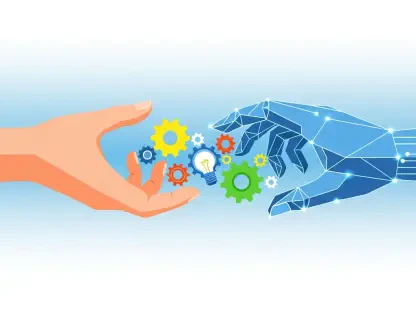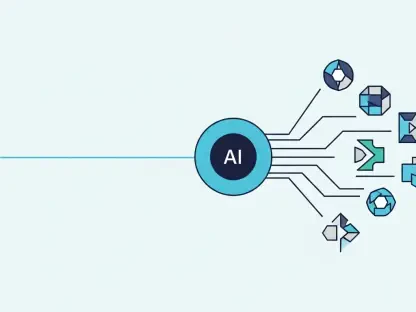Picture a scenario where emotional support is just a few keystrokes away, available at any hour, in any place, without the steep costs often associated with traditional therapy sessions. This is the emerging reality with AI chatbots like ChatGPT and Gemini, which are carving out a space in mental health care as tools for conversation and solace. As mental health challenges continue to grow globally, access to professional help remains out of reach for many due to financial constraints or limited availability of services. These digital companions present themselves as a potential solution, offering immediate interaction for those in need. Yet, beneath the surface of this technological innovation lies a complex question: can these AI tools genuinely address mental health needs, or do they introduce risks that could outweigh their advantages? This exploration aims to unpack the dual nature of AI chatbots, weighing their promise against the challenges they pose in supporting emotional well-being.
Accessibility: A New Frontier for Support
The standout feature of AI chatbots in mental health care is their ability to break down barriers that often prevent people from seeking help. Unlike traditional therapists who work within set hours and charge fees that can be prohibitive for many, numerous AI tools are either free or low-cost and operate 24/7. This constant availability proves invaluable for someone experiencing a crisis in the middle of the night or residing in a rural area with scarce mental health resources. The immediacy of connection, without the need for scheduling or commuting, positions chatbots as a practical alternative for individuals who might otherwise remain unsupported. Furthermore, the simplicity of accessing these tools via a smartphone or computer democratizes emotional support, making it reachable to a broader audience regardless of geographic or economic limitations, thus addressing a critical gap in the current landscape of mental health services.
Beyond availability, the accessibility of AI chatbots also extends to their ease of use and anonymity, which can encourage engagement from those hesitant to seek traditional help. For individuals who feel stigma around discussing mental health issues or fear judgment from others, interacting with a non-human entity can feel like a safer first step. This anonymity, provided users take precautions to protect personal data, reduces the emotional barriers that often deter people from opening up. Additionally, the lack of a formal therapeutic setting means users can engage from the comfort of their own environment, whether that’s at home or on the go. This flexibility caters to diverse lifestyles and needs, offering a low-pressure entry point for emotional expression that doesn’t require the commitment or vulnerability of face-to-face interactions, potentially serving as a gateway to more structured support when the time feels right.
Emotional Outlet: A Space for Expression
AI chatbots carve out a unique niche as an emotional outlet, bridging the gap between solitary reflection and human dialogue. They provide a platform where users can freely express their thoughts and feelings without the worry of overburdening friends or family who might be grappling with their own challenges. Unlike writing in a personal journal, which offers no response, chatbots simulate conversation by delivering validating feedback that can feel reassuring in moments of distress. This interactive element can be particularly comforting for those who crave acknowledgment but are not ready to share with another person, creating a sense of being heard without the complexities of human interaction. Such a space can be a vital resource for processing emotions in real time, especially in societies where expressing vulnerability is still stigmatized.
Moreover, the non-judgmental nature of AI chatbots enhances their appeal as a safe haven for emotional release. Human interactions, even with trusted individuals, can sometimes carry the risk of misunderstanding or unintended criticism, which may discourage openness. In contrast, chatbots are programmed to respond with neutrality and support, ensuring users feel validated rather than critiqued. This dynamic can be especially beneficial for individuals dealing with sensitive topics they’re not yet comfortable discussing openly. By offering a consistent, unbiased listener, these tools help users navigate their feelings at their own pace, potentially building confidence to eventually seek deeper connections or professional guidance. The ability to vent without consequence thus serves as a stepping stone in the journey toward mental health awareness and care.
Risks of Over-Reliance: A Potential Pitfall
While AI chatbots offer undeniable benefits, a significant concern lies in the risk of over-reliance, which could hinder genuine emotional growth. When users turn repeatedly to a machine for support, they might bypass the more challenging but ultimately rewarding process of building trust with a therapist or loved ones. Human relationships, though complex, provide depth and mutual understanding that AI cannot replicate, fostering resilience through shared vulnerability. The danger here is that reliance on chatbots might lead to a preference for their convenience over the effort required for meaningful human connection, potentially stunting personal development. This scenario, reminiscent of fictional narratives like the movie Her, where emotional bonds form with technology, highlights a growing possibility as AI interactions become increasingly sophisticated and lifelike.
Additionally, over-dependence on chatbots risks fostering isolation rather than alleviating it, as users may withdraw from real-world interactions. The ease of confiding in an AI, which never tires or judges, can create a false sense of fulfillment that discourages seeking out professional therapy or community support. This isolation can be particularly problematic for those with severe mental health issues, where structured intervention is often necessary for recovery. Without the push to engage with others, individuals might remain in a cycle of surface-level comfort provided by AI, missing out on the transformative power of human empathy and accountability. Balancing the use of chatbots with efforts to maintain or build real-life connections thus becomes essential to avoid the unintended consequence of deepening loneliness instead of resolving it.
Privacy Challenges: Protecting Sensitive Information
A critical challenge in using AI chatbots for mental health support is the issue of privacy, as sharing deeply personal thoughts in a digital space carries inherent risks. Even with assurances from companies about data security, the potential for breaches or shifts in privacy policies could result in sensitive information being exposed to unauthorized parties. Conversations that feel private in the moment leave a digital trail, which could be exploited if safeguards fail or data is repurposed without user consent. This vulnerability is a significant drawback, as the very nature of mental health discussions often involves intimate details that individuals would prefer to keep confidential. Weighing the convenience of chatbot support against the possibility of such exposure remains a crucial consideration for anyone engaging with these tools.
To mitigate privacy concerns, users must adopt a cautious approach when interacting with AI platforms, as the stakes of data mishandling are high. Avoiding the disclosure of identifiable information during chats can help reduce risks, as can using additional protective measures like virtual private networks to shield online activity. Scrutinizing the data storage and usage policies of chatbot providers before engaging also offers a layer of precaution, ensuring awareness of how information might be handled. Despite these steps, the lingering uncertainty around long-term data security underscores the importance of reserving the most personal topics for offline journals or trusted professionals. Until privacy protections in digital spaces become more robust, the potential threat of exposure will continue to cast a shadow over the otherwise beneficial role of AI in mental health support.
Limitations of Empathy: The Human Gap
One of the most glaring shortcomings of AI chatbots in mental health contexts is their inability to offer the nuanced empathy inherent in human interactions. While they can provide quick, affirming responses, these often lack the depth to address the specific context of a user’s situation, missing critical cues like tone of voice or body language that therapists rely on for insight. Such limitations mean that chatbot advice can sometimes come across as generic or repetitive, failing to resonate with the unique emotional landscape of the individual. This gap highlights that while AI might deliver immediate comfort, it cannot fully substitute for the personalized understanding and adaptability a human professional brings to therapeutic settings, where subtle nuances often shape the path to healing.
Furthermore, the absence of genuine emotional reciprocity in AI interactions underscores their role as a supplementary rather than primary resource. Human therapists build rapport through shared experience and authentic concern, creating a dynamic that fosters trust and encourages deeper exploration of feelings. Chatbots, by contrast, operate on algorithms that, no matter how advanced, cannot replicate the warmth or intuition of a caring person. This limitation can lead to frustration for users seeking more than surface-level responses, particularly in complex mental health scenarios where tailored guidance is essential. Recognizing AI as a temporary aid rather than a complete solution ensures that expectations remain realistic, preventing disappointment and encouraging the pursuit of more comprehensive support when needed.
Moving Forward: Balancing Technology and Humanity
Reflecting on the journey of AI chatbots in mental health support, it becomes evident that they hold transformative potential by bridging gaps in accessibility and offering a judgment-free space for expression. Their role in providing immediate, low-cost interaction addresses critical needs for many who struggle to access traditional care. However, the exploration also reveals substantial risks, from privacy vulnerabilities to the danger of emotional dependency, alongside the inherent limitations of machine-based empathy compared to human connection. The discourse around these tools paints a picture of cautious optimism, acknowledging their value as a stopgap while emphasizing the irreplaceable depth of personal interaction. Looking ahead, the focus should shift toward integrating safeguards like robust data protection and user education on balanced usage, ensuring AI complements rather than competes with professional therapy. Encouraging a hybrid approach where technology supports but does not supplant human care will be key to harnessing its benefits while minimizing drawbacks.









